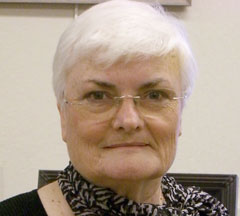Can We Use Particle Counters As Indicators of Bioaerosols?
By Dr. Harriet Burge, EMLab P&K's Director of Aerobiology
As usual, the answer is "it depends." Particle counters are becoming more and more
sophisticated. Particle counts can be divided into relatively narrow ranges, and particles with
special characteristics such as fluorescence can be detected. It would seem logical, since
bioaerosols are particles that with all this technology they would be useful in mold
investigations. The problems lie in the fact that bioaerosols are usually a relatively small
fraction of the particles in their size range.
There are some cases where particle counters can be used. In research, of course, experiments
can be set up where they are very useful. If you are doing a chamber study and want to monitor
concentrations of a bioaerosols that is purposely released in high concentrations, particle
counters can be very useful. This strategy could be used in a building where extensive growth
is visible and you need to know whether or not specific activities create spore aerosols from
this growth. In this case, you could identify the spores at least with respect to size range,
then do a series of background measurements with the particle counter to establish baseline
particle concentrations in that size range, then begin the aerosolization experiments.
A similar strategy could be used if the growth is composed of one or more fungi that fluoresce
naturally. Specialized particle counters that stimulate and then detect this fluoresce can be
used. Unfortunately, all fungal spores do not fluoresce, and those that do often do so irregularly.
I am often asked if particle counters can be used for bioaerosols clearance sampling. You can
certainly monitor the fall of particle concentrations over time following remediation activities.
However, these activities generate high non-biological aerosol concentrations in which the
bioaerosols will be lost.
There are several studies in the literature that do report the successful use of particle
counters in bioaerosols investigations. If you are lucky, you too can have this success.
However, in my experience such cases are rare, and it is much safer to use more traditional
methods for documenting air concentrations, at least of fungal spores.
This article originally appeared in the May 2011 issue of Indoor Environment Connections.
Reprinted by permission.
 |
|
About Dr. Harriet Burge
Dr. Harriet Burge is EMlab P&K's Director of Aerobiology and Chair of EMLab P&K's
Scientific Advisory Board. Widely considered the leading expert in indoor air quality (IAQ),
Dr. Burge pioneered the field more than 30 years ago. She has served as a member of three
National Academy of Sciences committees for IAQ, including as Vice-Chair of the Committee
on the Health Effects of Indoor Allergens. View Dr. Burge's Curriculum Vitae.
Read "Ask Dr. Burge" articles
|